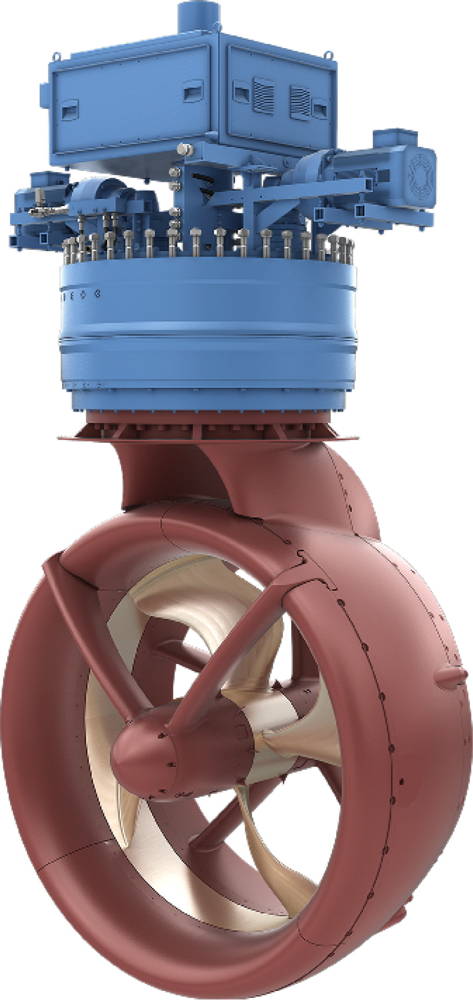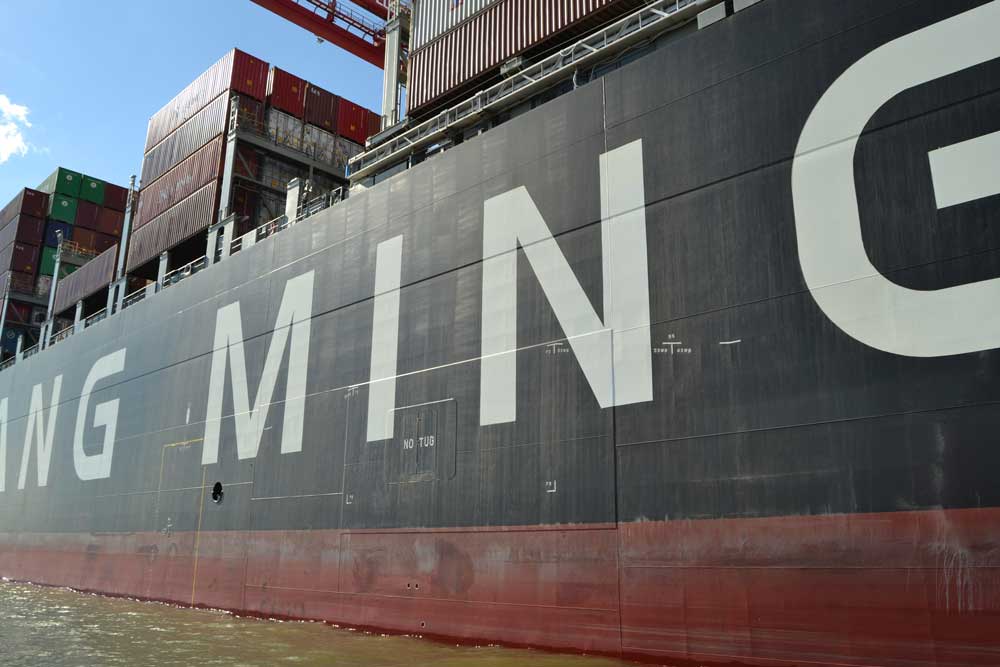
After a year of sea trials and in time for SMM, Rolls-Royce has introduced its new Azimuth Permanent Magnet Thruster. Market conditions may be difficult, but the advantages draw interest to the technology
Since 2015, the thruster has been in operation aboard the 31m long research vessel »Gunnerus«, owned by the Norwegian University[ds_preview] of Science and Technology (NTNU) Trondheim, and has clocked up 3,000 hours of operation – 1,500 on each unit. On installation aboard the »Gunnerus«, the vessel’s existing shaftlines and rudders were converted to PM azimuth thrusters but the existing generator sets were maintained. This allowed exact comparisons to be made of performance before and after installation.
»It saves maintenance costs as you don’t nee the whole system around it.«
Over the course of the trial researchers found a very high motor efficiency, 97% at nominal speed and very high over the whole load range, an increase in bollard pull (+20%) and speed – approximately 1kn over the range for the same input power – with airborne and structural noise readings lower or similar to previous performance. Hydro acoustic noise was improved.
The PM Thruster has fewer moving parts than conventional thrusters. It combines a ring-type permanent magnet electric motor, propeller and nozzle in a tightly integrated propulsion unit. Simple bearings in the rotor hub carry all loads, and only a small oil circulation pump is required. This system carries less oil than conventional thrusters reducing the risk of environmental damage if spilled. it system uses biodegradable oil, which has the Vessel General Permit (VGP) for Environmental Acceptable Lubrications (EAL) approval. »There were some challenges in the development process,« Gunnar Johnsen, Head of Electrical System R&T – Marine, recalls. »We experimented with water-lubricated bearings and finally changed to a central bearing design with conventional lubrication. The hub carries the bearings, takes propeller thrust and provides radial location of the rotor. It also improves the hydro-dynamic efficiency. Both rotor and stator are sealed against water ingress and operate fully submerged.«
The new azimuth thruster is designed to be space saving and easy to install and maintain. The only components to be found in the thruster room are the slipring case, that transfers power to the thruster, compact electric steering motors and a small lubrication swivel. With a submerged motor, no cooling equipment is required which saves further space and reduces installation cost, Rolls-Royce says. »We expect to see a reduction of 50% on the maintenance costs and in case of any maintenance, our condition based monitoring system shows you the current health of the units and allows you to plan maintenance ahead,« Johnsen says.
The Azimuth Permanent Magnet Thruster is the latest in a range of Rolls-Royce propulsion and deck machinery products using permanent magnet technology. The first PM thruster application was installed on a test-bed vessel, the »Olympic Octopus«, in 2007 to 2009 and then commercially modified and re-installed in 2012. According to the company it has been operating for over 5,000 hours without requiring maintenance.
»The wind power industry already makes larger diameter electric motors«
Right now, 2.6 MW tunnel and azimuth thrusters are available. »But we are working on more power«, Johnsen says. From 2017 a new azipull AZP-PM model will be on offer – the AZP-PM 120 – rated at 1,800-3,500 kW continuous. This will be followed by two smaller frame sizes, 085 and 100, and one larger, the 150. They will be available for powers from 900 kW to 5,000 kW and speeds up to 24kn. Regarding power, there is no technology limitation, Johnsen says. There only are limits in production facilities. »The wind power industry already makes larger diameter electric motors. We just have to chose the right production methods,« he explains.
The new AZP-PM will have an L-drive configuration. It uses the same underwater unit as conventional azipull thruster but with a vertical shaft PM motor integrated into a new upper unit. A compact PM motor fits within the diameter of the mounting flange giving a small footprint and eliminating an upper gearbox. This avoids the complication of a coupling, foundations and motor for a conventional Z or C-drive, Rolls-Royce says.
Three propeller types, controllable pitch, fixed pitch and fully feathering, will be offered for the AZP-PM, with the choice dependent on the vessel and its operation. All three types have been proven in use on existing azipull models.
»The market is down,« Gunnar Johnsen admits, »but there is a lot of interest in the advantages of this product.« So far, Rolls-Royce has sold six of the 2.6 MW units, two of them to be installed in offshore vessels, and is in advanced talks with a number of potential customers across a range of sectors. The company uses the PM technology also in winches for fishing vessels and anchor handlers, cranes and generator equipment and is working on the design of a total PM vessel.
















